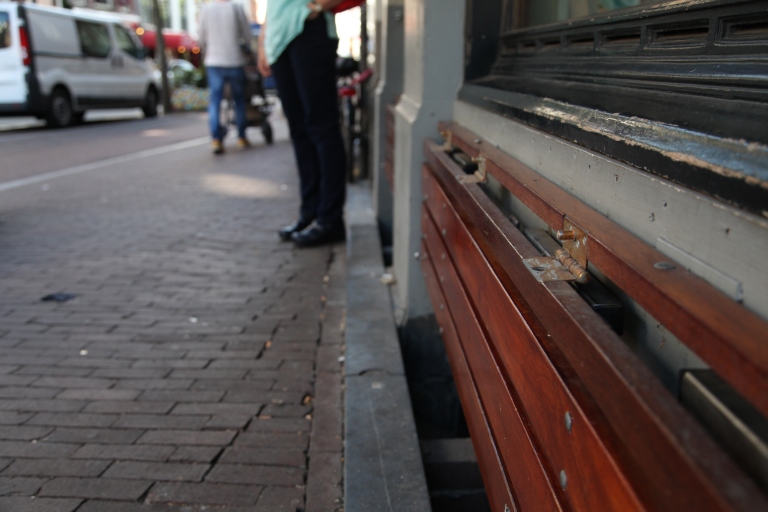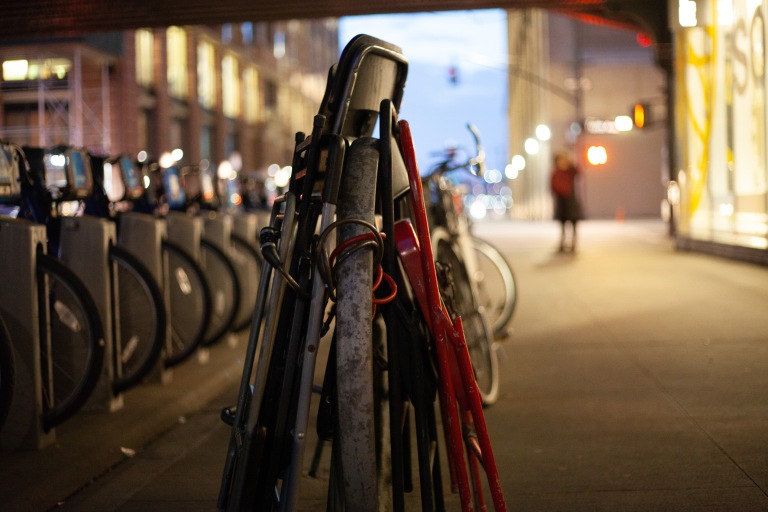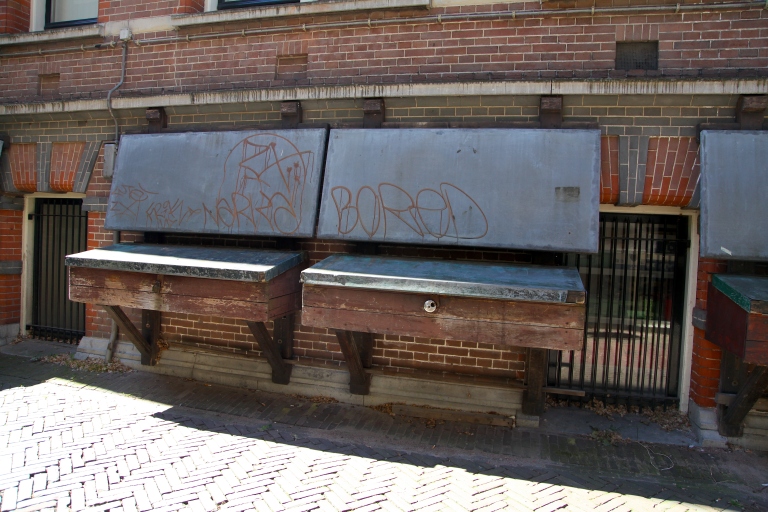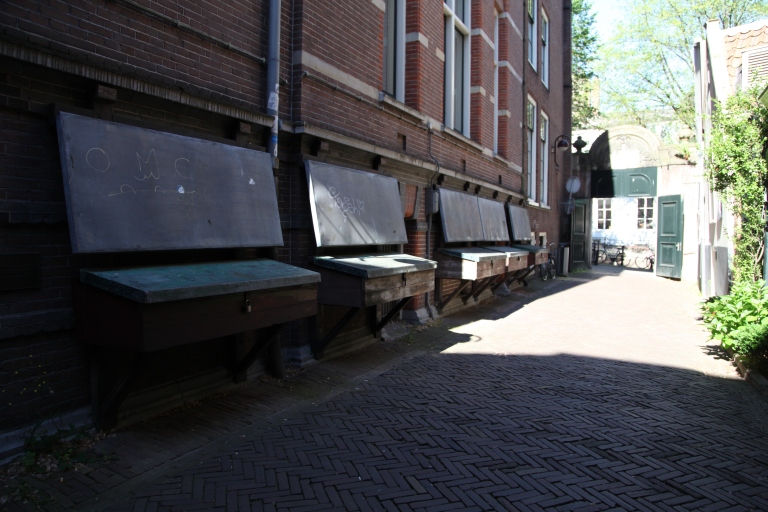Amsterdam, Bangkok, and New York City each play a unique version of the “flexible sidewalk-level commercial infrastructure” game.

This bench outside of a bakery and cheese shop in the city’s bustling Centraal district is unobtrusive when not in use, but folds out to accommodate al fresco dining during busier operating hours.

Besides tucking away to not hinder sidewalk traffic flows when not in use, this bench also stood out for how well it solves multiple other problems that define street furniture for small cafés and bakeries; from preventing theft, to not needing to devote limited indoor storage space for storing furniture. Reminds me of the idea of a “Murphy bed”, but for small shops and cafés. It also calls to mind a similar solution I spotted in Bangkok for an alleyway-based café, as seen below:

How do restaurants around you with access to a slice of sidewalk accommodate customers who’d like to enjoy their food/beverage of choice al fresco, and how has that been forced to evolve in the face of a pandemic? Does the solution accommodate and work with the extant sidewalk traffic flows, or disrupt it? Does it get locked up at night?

Building upon that last question, note how the solutions in Amsterdam and Bangkok, with seating built directly into the urban fabric itself, compare to how street furniture supporting informal ventures is secured on the streets of New York City. Vendors lock folding chairs to the most secure and ubiquitous piece of sidewalk infrastructure available – which in many cases happens to be a bicycle rack – claiming space for their informal business and, like the Amsterdam bakery and Bangkok cafe, solving the challenges of limited storage space and ease of theft if left unsecured.

To close it out, back to Amsterdam, where, nearby the bakery and just outside the gates of a university campus, affordances for street-level commerce are built into the side of a brick building. That it was closed kept me from seeing what was for sale, but didn’t prevent me from being struck by the elegance of the goods display solution, as it affords an interesting intermediary point between commerce happening directly atop sidewalks, with goods on blankets or arranged in the back of a vehicle (see my presentation to the Ethnographic Praxis in Industry Conference (password: hymanEPIC2014) back in 2014), and more formal storefronts in Amsterdam (such as this bicycle shop with a unique goods display tactic for bicycle bells).

In this moment of pandemic, what objects and infrastructure support sidewalk-level commerce where you are? Beyond storage, are how those pieces of flexible furniture cleaned a factor in their use? Do things co-exist along a spectrum of formality, with storefronts, mobile street-based vendors, and sidewalk-based solutions as seen above in Amsterdam and Bangkok? Or do climate, legislation, or other forces constrain how people temporarily stake out a spot of sidewalk for themselves?

